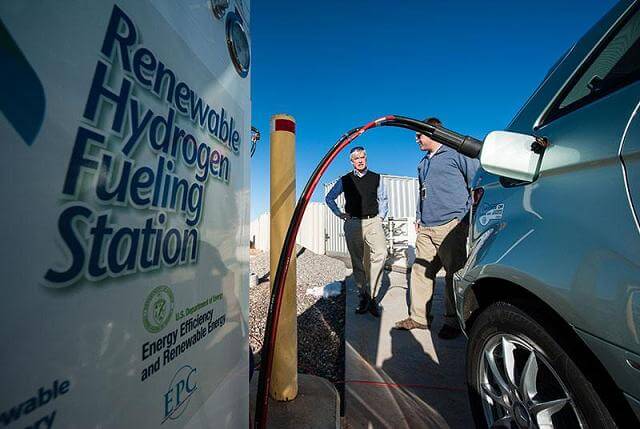Editor’s note: The hydrogen needed for these developments will probably be generated by electrolyzing water, and ideally, using wind generated power. In addition, hydrogen provides a way to store excess wind power.

This funding will accelerate American innovation in hydrogen and fuel-cell technologies by supporting research and development, early market deployments, and domestic manufacturing.
The Energy Department has announced up to $35 million in funding to advance hydrogen and fuel cell technologies that will reduce our nation’s dependence on foreign oil and cut harmful carbon emissions. As part of the Administration’s all-of-the-above energy strategy, this funding will accelerate American innovation in hydrogen and fuel-cell technologies by supporting research and development, early market deployments, and domestic manufacturing. The Department also aims to develop collaborative consortia for fuel cell performance and durability and advanced hydrogen storage materials research to leverage the capabilities of national lab core teams.
The available funding includes hydrogen production, delivery, and storage research and development; demonstration of infrastructure component manufacturing, and support for Climate Action Champions deploying hydrogen and fuel cell technologies; consortia topics for fuel cell performance and durability and advanced hydrogen storage materials research; and cost and performance analysis for hydrogen production, storage, and fuel cells.
Fuel cells generated major headlines and excitement in 2015 as automakers delivered fuel cell electric vehicles (FCEVs) to customers in select locations around the world and unveiled new models and market introduction strategies. Commercial leases began in the U.S. and Japan in 2014 and 2015, and several automakers are now selling their commercial FCEVs in California and Japan.
As FCEVs become increasingly commercially available
, the Energy Department is focused on advancements to enable hydrogen infrastructure including production, delivery, storage, and manufacturing, as well as continuing to reduce fuel cell cost and improve durability. This FOA includes highly targeted and collaborative lab-led consortium projects in both fuel cells and hydrogen storage technologies.
The FOA includes four general areas of interest, each with several subtopics:
- Research and development
- Hydrogen production R&D: High-temperature water splitting compatible with renewable and sustainable energy sources
- Advanced compression
- Advanced vacuum insulation for automotive applications
- Demonstration and deployments
- Component manufacturing and standardization for hydrogen infrastructure (e.g., hose/piping, dispenser/station technologies)
- Crosscutting: America’s Climate Action Champions
- Consortia topics
- Fuel Cell – Performance and Durability (FC-PAD)
- Hydrogen storage materials – Advanced Research Consortium (HyMARC)
- Analysis
- Cost and performance analysis for fuel cells, hydrogen storage, for hydrogen production and delivery.
For more: EERE Funding Opportunity Exchange website.
The Department’s Office of Energy Efficiency and Renewable Energy accelerates development and deployment of energy efficiency and renewable energy technologies and market-based solutions that strengthen U.S. energy security, environmental quality, and economic vitality. Learn more about the Energy Department’s broader efforts to develop affordable, efficient fuel cell and hydrogen technologies on EERE’s Hydrogen and Fuel Cells page.
Filed Under: Financing, News, Policy




